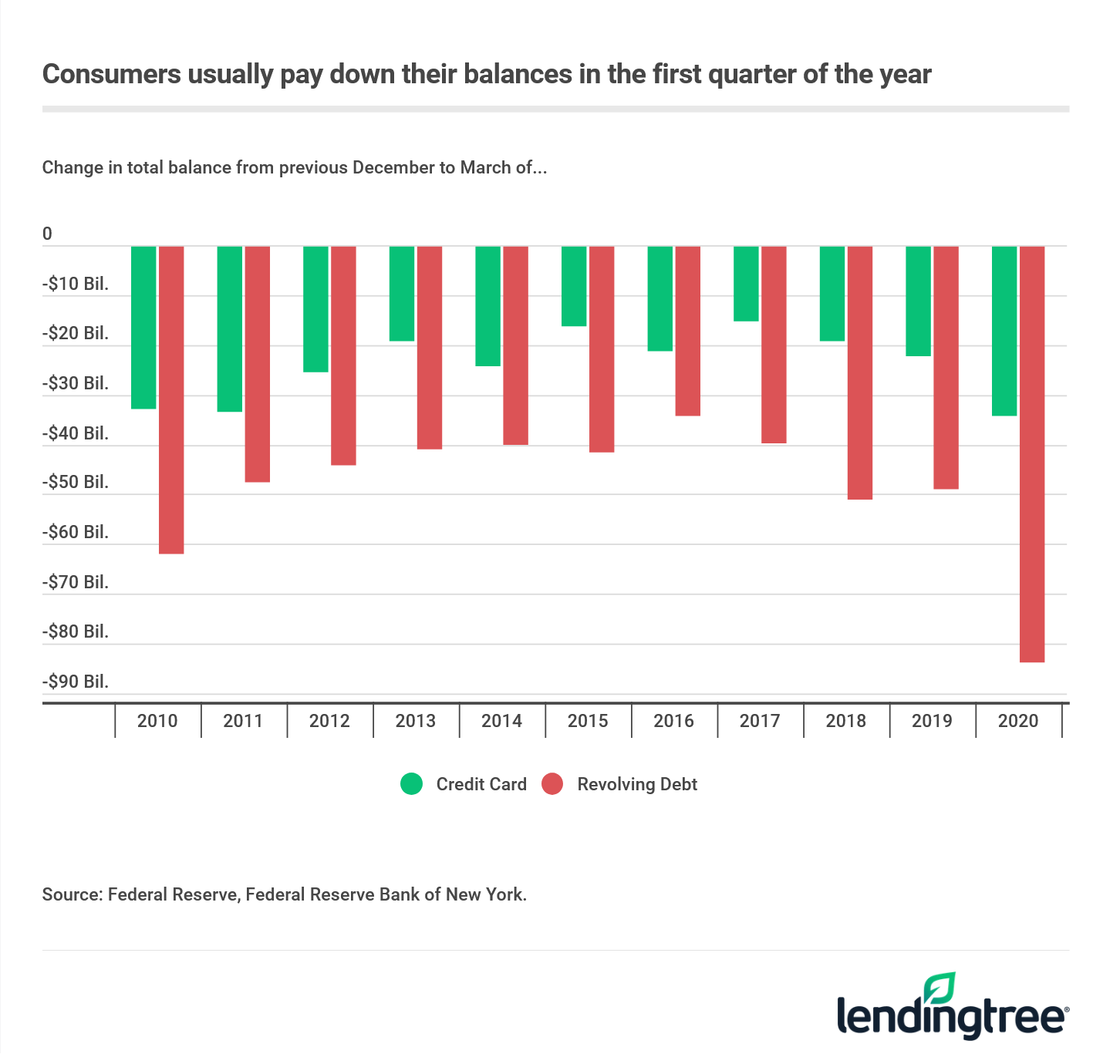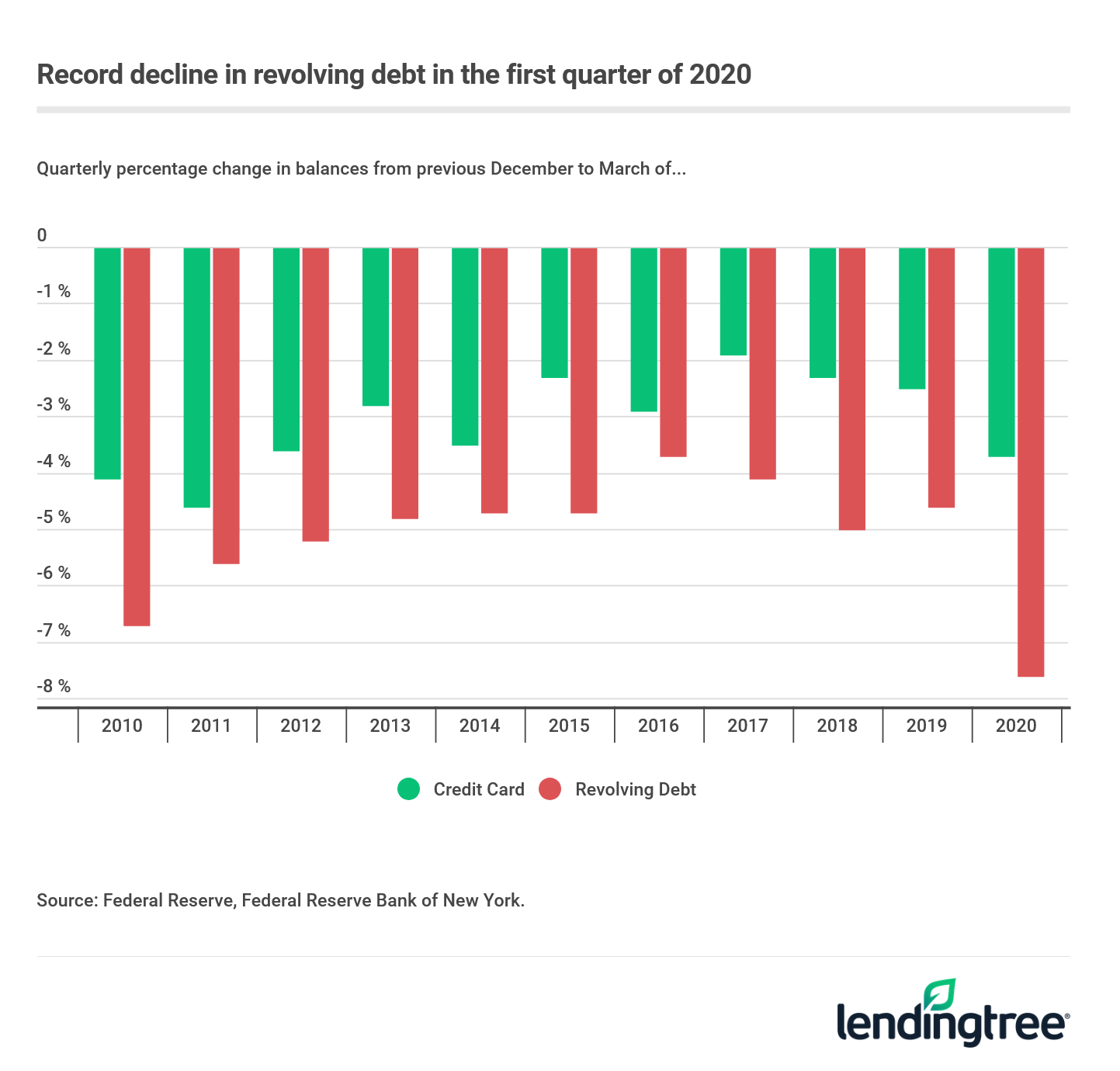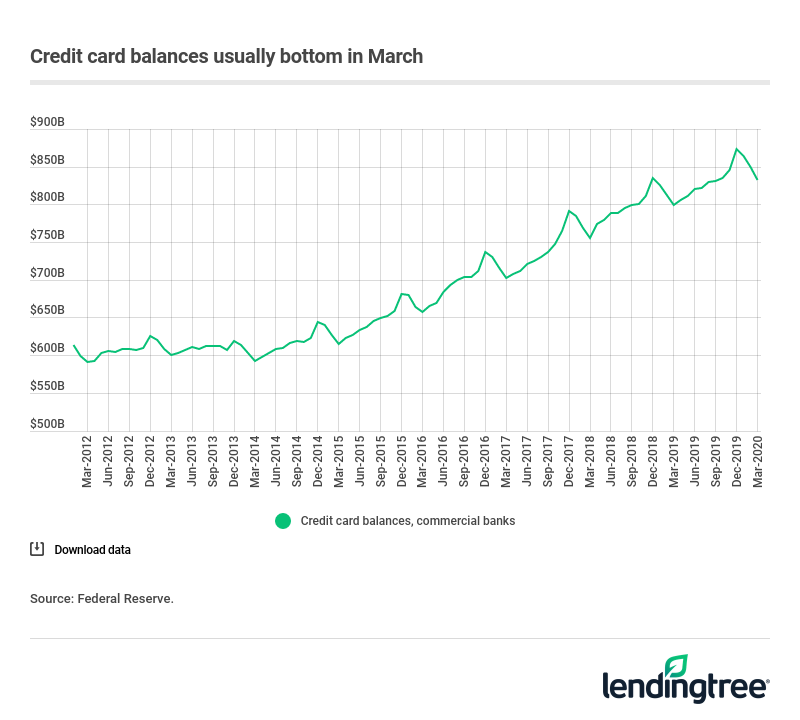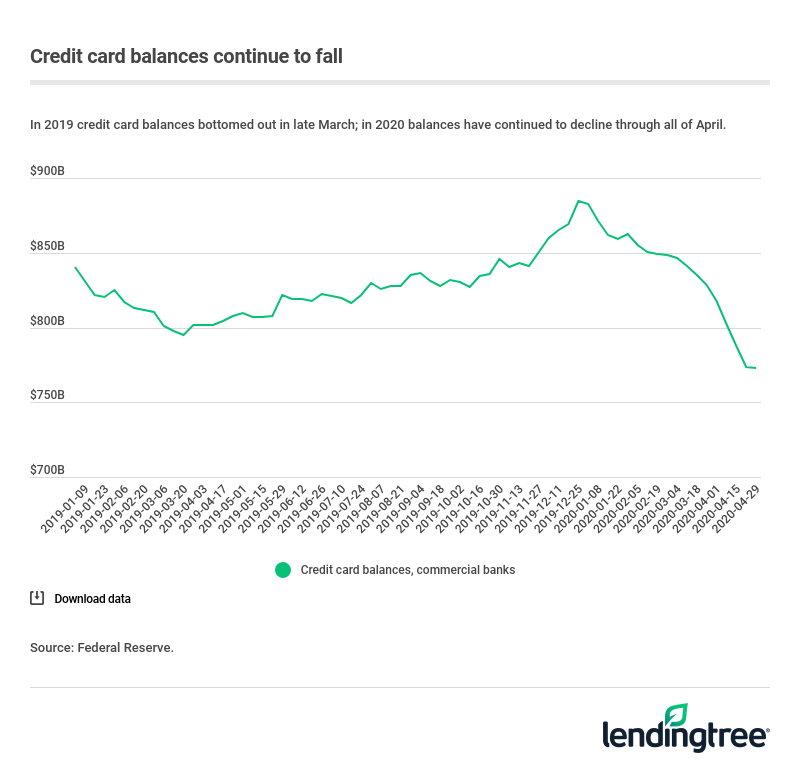LendingTree Debt Report — May 2020
Highlights
- Credit card balances declined in the first quarter by 3.7%, dropping more than 1 percentage point compared to the balances for each of the past two years.
- In April, balances continued to decline by an additional 5.5%, contrary to typical April increases, according to data from commercial bank credit card issuers.
Credit card balances declined by 3.7% in the first quarter, 1.5 percentage points more than in recent years
From 2017 to 2019, the first quarter has resulted in a 2.2% decline in credit card balances, and a 4.6% decline in all types of revolving debt. But in 2020, those balances fell by 3.7% and 7.6%, respectively.
Both recently released reports indicating that credit card and revolving credit balances declined in the first quarter. Since 2009, according to both measures, credit card balances and revolving credit always decline in the first quarter.

These balance declines are the steepest ever, in both dollar terms (balances fell by $34 billion for credit cards and $83.5 billion for all revolving debt) and, in the case of revolving credit, the 7.6% decline was the largest quarterly percentage decline on record. For credit card balances, the 3.7% decline in the first quarter of 2020 was the biggest since 2011.

Balances and credit card spending have declined in April
Typically by April, credit card spending and balances tend to increase as Americans begin to rack up new spending. From 2012 through 2019, for example, April credit card balances at banks increased by an average of 1.0%, or $6.8 billion.

But as of April 29, credit card balances continued to decrease. Now at $773 billion, the total balance among credit cards is down 5.5% from the $818 billion owed to banks at the beginning of the month. While this series only includes reports from commercial banks – and not other issuers of credit cards – the weekly report of assets and liabilities shows that balance declines are persisting through April.

Lower credit card spending has certainly played a prominent role in the decline. According to Visa, April credit card volume was down by roughly 20% at the end of the month, when compared to the same period in 2019.


